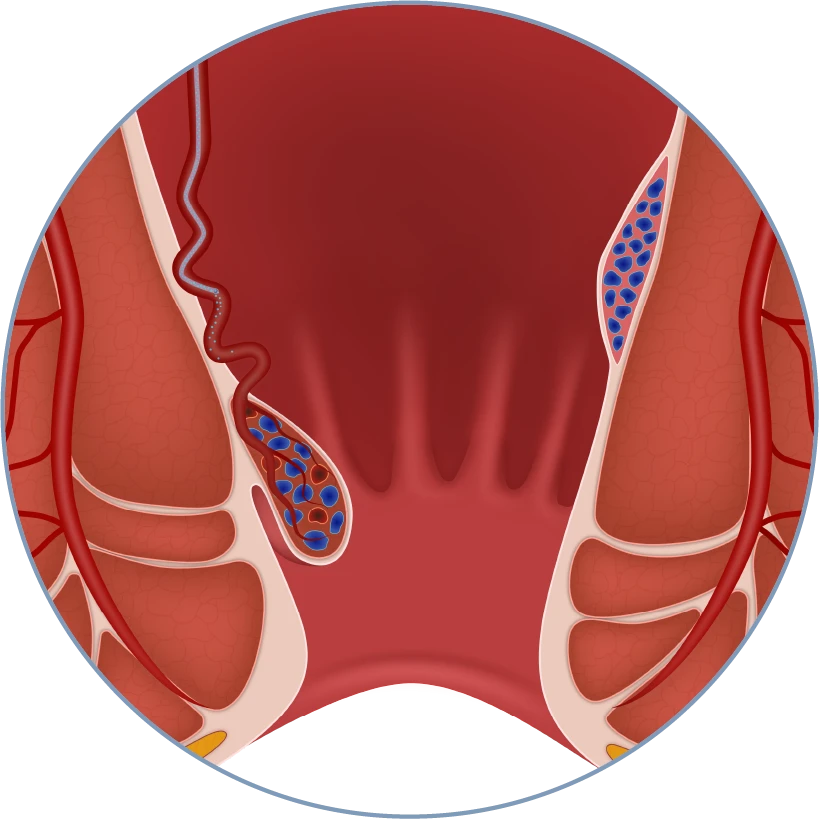Hemorrhoid Treatment
Hemorrhoids are swollen veins in the anus and lower rectum, affecting about 1 in 20 Americans. They’re common in both men and women, with nearly half of adults over the age of 50 experiencing them. Hemorrhoids can be classified as either:
- Internal: Located within the rectum, these are not visible or sensitive, but may bleed.
- External: These are visible outside the anus and can be painful, especially if they become thrombosed (blocked by a blood clot).


Symptoms of Hemorrhoids
The most common symptom of hemorrhoids is bright red bleeding during bowel movements. Other symptoms include anal itching, pain during bowel movements, and painful swelling around the anus.
What Are the Treatment Options for Hemorrhoids?
Hemorrhoid treatments range from lifestyle changes and medications to both minimally invasive and surgical options. Common minimally invasive treatments include rubber band ligation, infrared photocoagulation, and Doppler-guided hemorrhoidal artery ligation. For more advanced cases, surgical removal (hemorrhoidectomy) is considered the “gold standard” for Grades III and IV hemorrhoids.
What Is Superior Rectal Artery Embolization?
Superior rectal artery embolization, also known as hemorrhoid embolization, is a newer, non-surgical treatment for Grades I-III internal hemorrhoids. This transarterial therapy works by reducing blood flow to the hemorrhoids, shrinking them over time. Hemorrhoids are made up of a dense network of blood vessels called the Corpus Cavernosum Recti (CCR). By blocking the blood supply to these vessels, the procedure decreases venous pressure and reduces the size and symptoms of hemorrhoids.
The procedure is performed through a tiny pinprick in the wrist or groin by your interventional radiologist. Under sedation, a microcatheter is guided into the rectal artery using real-time X-ray imaging. Small coils or microspheres are placed into the artery, reducing blood flow to the hemorrhoids. The entire procedure takes about an hour, followed by a 1-2 hour recovery period.
Recovery After Hemorrhoid Embolization
Most patients experience minimal pain after rectal artery embolization and can return to work the day after the procedure. You’ll be discharged the same day, with no significant downtime required.
Request an appointment
Schedule a consultation with our expert interventional radiology team to learn more and find out if this innovative treatment is right for you.